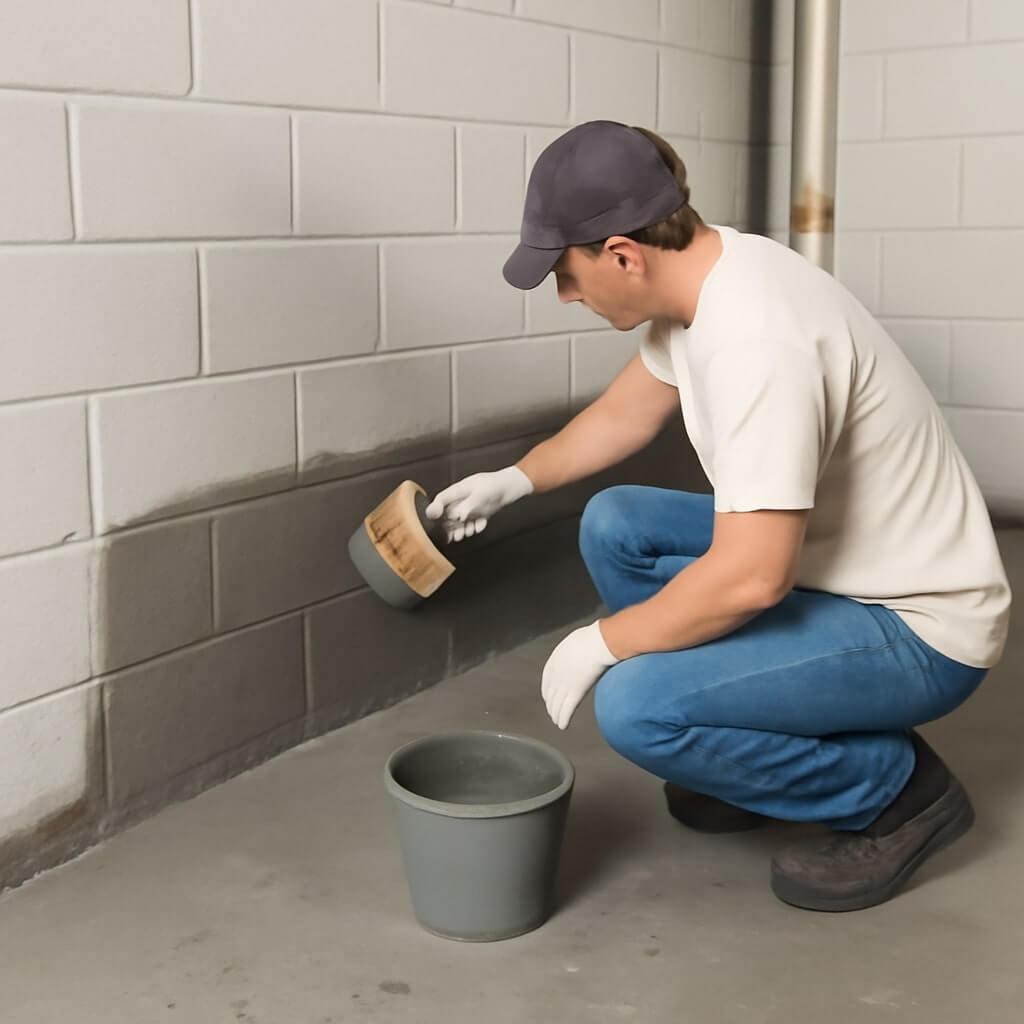Waterproofing a finished basement is essential for preventing moisture issues and protecting your investment. First, you’ll want to assess the current condition of your space, looking for signs of dampness or structural damage. Identifying the sources of potential water intrusion is next. Once you understand the problem, you can choose the right waterproofing methods and implement effective drainage solutions. Ready to learn how to keep your basement dry for the long haul?
Key Takeaways
- Assess the current condition of your basement by checking for moisture levels, signs of mold, and structural integrity.
- Identify sources of water intrusion, including leaky pipes, foundation cracks, and drainage issues around your home.
- Choose appropriate waterproofing methods, such as interior sealants or exterior barriers, based on the severity of water problems.
- Implement effective drainage solutions like sump pumps and French drains to redirect water away from the foundation.
- Maintain a dry basement long-term by regularly inspecting systems, cleaning drains, and using dehumidifiers to control humidity levels.
Assessing Your Basement’s Current Condition
Before diving into waterproofing solutions, it’s essential to assess your basement’s current condition. Start by measuring moisture levels using a hygrometer; this helps you understand the environment. Pay close attention to any signs of dampness or mold.
Next, evaluate the structural integrity of walls and floors. Look for cracks or signs of water damage, as these can compromise your basement’s safety. Document your findings to identify areas needing attention.
Identifying Common Sources of Water Intrusion
Once you’ve assessed your basement’s condition, the next step is pinpointing common sources of water intrusion. Start by checking for leaky pipes, as these can cause significant moisture problems. Then, examine the foundation for cracks, which can allow water to seep in during heavy rains.
| Source | Description |
|---|---|
| Leaky Pipes | Pipes that are damaged or poorly sealed. |
| Foundation Cracks | Visible gaps in the foundation walls. |
| Poor Drainage | Ineffective grading around your home. |
Identifying these issues early helps you take the right steps to prevent further water damage.
Choosing the Right Waterproofing Methods
As you consider how to effectively waterproof your basement, it’s crucial to evaluate the various methods available to suit your specific situation.
For interior sealing, applying waterproof paint or sealants can help block moisture from penetrating walls and floors. This method is particularly useful for minor issues.
On the other hand, if you’re dealing with more significant water problems, installing exterior barriers, like drainage membranes or coatings, can redirect water away from your foundation.
For serious water issues, consider adding exterior barriers to effectively redirect water away from your foundation.
Each method has its strengths, so assess your basement’s needs carefully to choose the right approach for a dry, comfortable environment.
Implementing Drainage Solutions
To guarantee your basement remains dry and free from water damage, implementing effective drainage solutions is essential.
Start by installing a sump pump, which will actively remove excess water from your basement. Make sure it’s connected to a proper drainage system to prevent water buildup.
Additionally, consider adding French drains, which redirect water away from your foundation. These drains consist of gravel-filled trenches that capture and channel water efficiently.
Maintaining a Dry Basement Long-Term
Implementing drainage solutions like sump pumps and French drains lays the groundwork for a dry basement, but ongoing maintenance is key to ensuring it stays that way long-term. Regularly inspect your systems and perform preventive maintenance to catch issues early. Check humidity levels with a hygrometer, and use dehumidifiers to control moisture.
| Action | Frequency |
|---|---|
| Inspect sump pump | Monthly |
| Clean French drains | Biannually |
| Test humidity levels | Monthly |
| Change air filters | Quarterly |
Conclusion
By following these steps, you can effectively waterproof your finished basement and protect it from moisture damage. Start with a thorough assessment, identify potential water intrusion sources, and choose the right waterproofing methods tailored to your needs. Implement reliable drainage solutions and commit to regular maintenance to keep your basement dry in the long run. With consistent effort, you’ll create a safe, comfortable space that adds value to your home and enhances its livability.

